
Indigenous Collection
Rose Villa Library
This collection was donated by
Pat and Walt Garvin and Diana Stallard.
Click to view or print:
PDF version of this booklist
PDF version of the DVD catalog
Oregon Tribal History
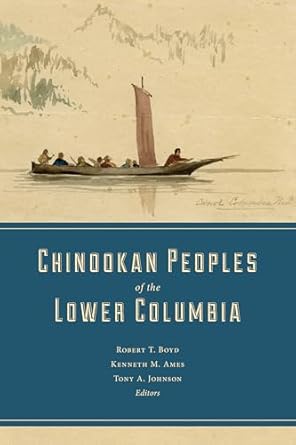
Chinookan Peoples of the Lower Columbia, 2015. Robert Boyd, Kenneth Ames, Tony Johnson.
Despite the title, this book contains one of the best descriptions of pre-settler Willamette Falls people and trade. It describes lower Chinookan people, Cathlapotle discovery and work.

The First Oregonians, 2007. Oregon Council for the Humanities.
Oregon Indians tell their own stories—more than half of the chapters are written by members of Oregon’s nine federally recognized tribes. Using oral histories and personal recollections, these chapters vividly depict not only a history of decimation and decline, but also a contemporary view of cultural revitalization, renewal, and continuity.
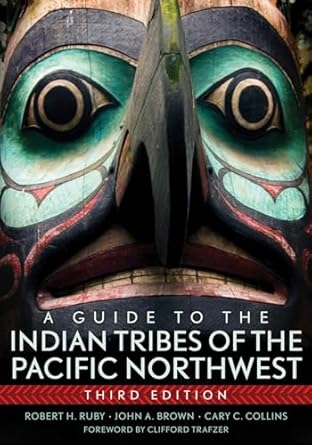
A Guide to the Indian Tribes of the Northwest, 1992 (2010 ed. available). Robert Ruby and John Brown.
This book serves as reference on the diverse Indigenous people of the Northwest. Now, in the wake of renewed tribal self-determination, this revised edition reflects the many recent political, economic, and cultural developments shaping these Native communities.
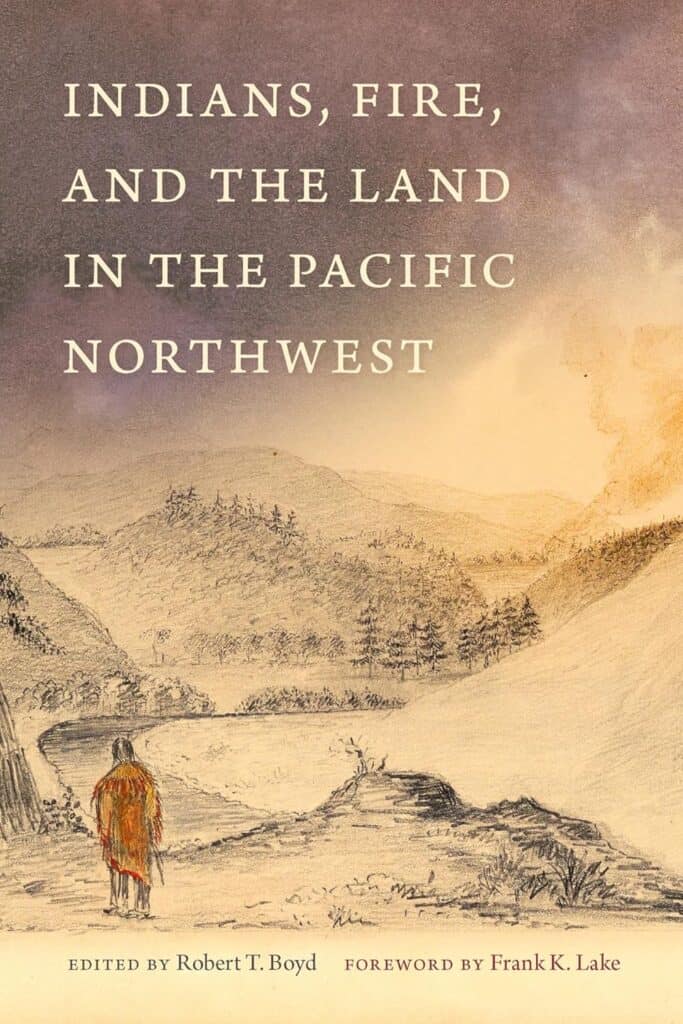
Indians, Fire and the Land in the Pacific Northwest, 2022. Robert Boyd.
Interdisciplinary approach to the important issues facing Native tribes and their relationship to the land and their use of fire to shape the flora and fauna of the land. Draws on historical journals, Native American informants, ethnobotanical and forestry studies, describes local fire patterns in eight ecoregions of the Pacific Northwest.
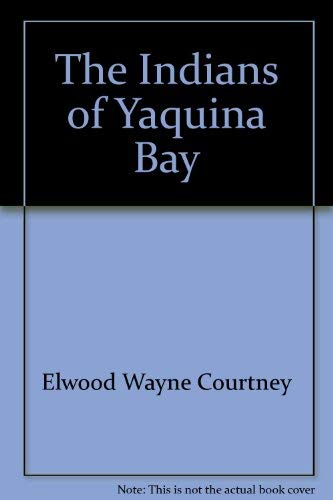
The Indians of Yaquina Bay, 2006. Elwood Wayne Courtney, a chapbook.
Traces a story of the ancient Yacona Natives from Asian migration to extinction by 1934, excepting the smattering of mixed blood Natives at the Siletz reservation.
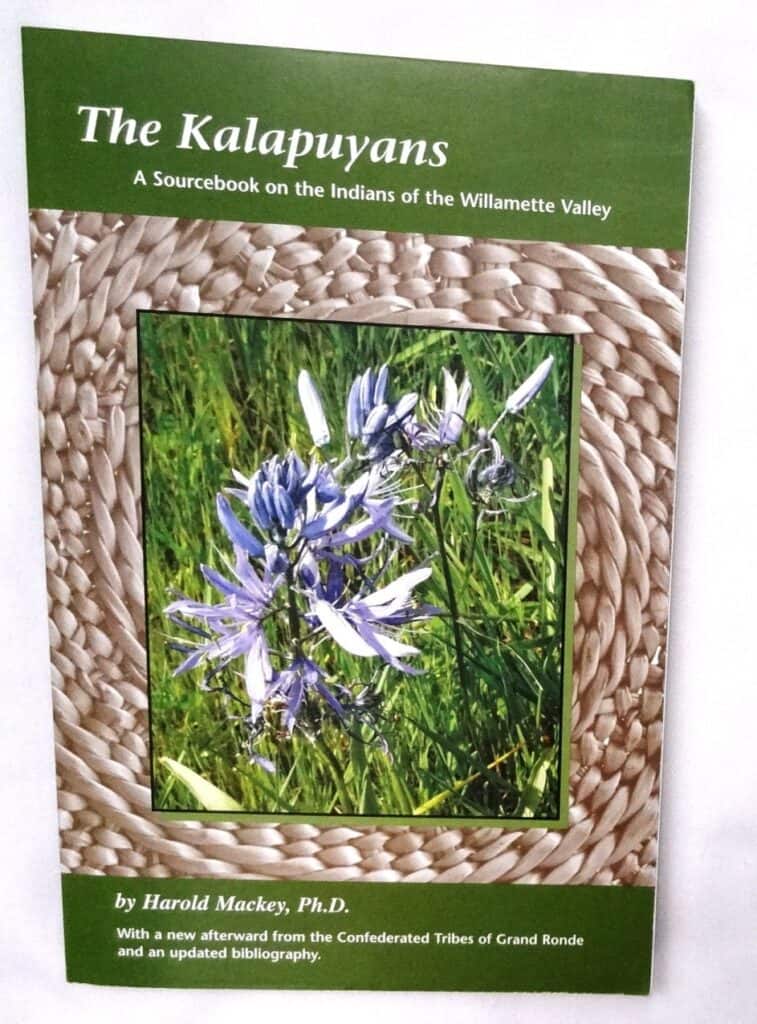
The Kalapuyans: a source book on the Indians of the Willamette Valley, 2004. Harold Mackey.
An ethnography and history of the many bands of Kalapuyans. Contains prints of many early paintings of the valley under Kalapuyan stewardship. Contains an afterward by the Confederated Tribes of Grand Ronde.

Lewis and Clark among the Indians, 1988. James Ronda.
This book takes a look at the Expedition interactions with the Native people they encountered on their journey.
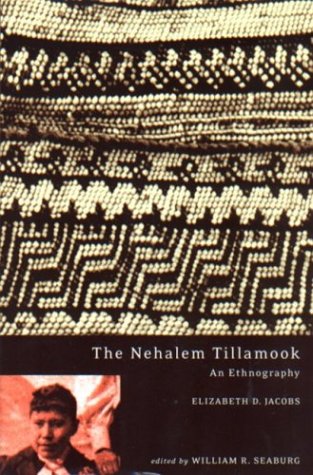
The Nehalem Tillamook: an Ethnography, 2003. Elizabeth Jacobs.
In 1933 and 1934, Elizabeth Jacobs recorded ethnography of the Nehalem Tillamook tribes.
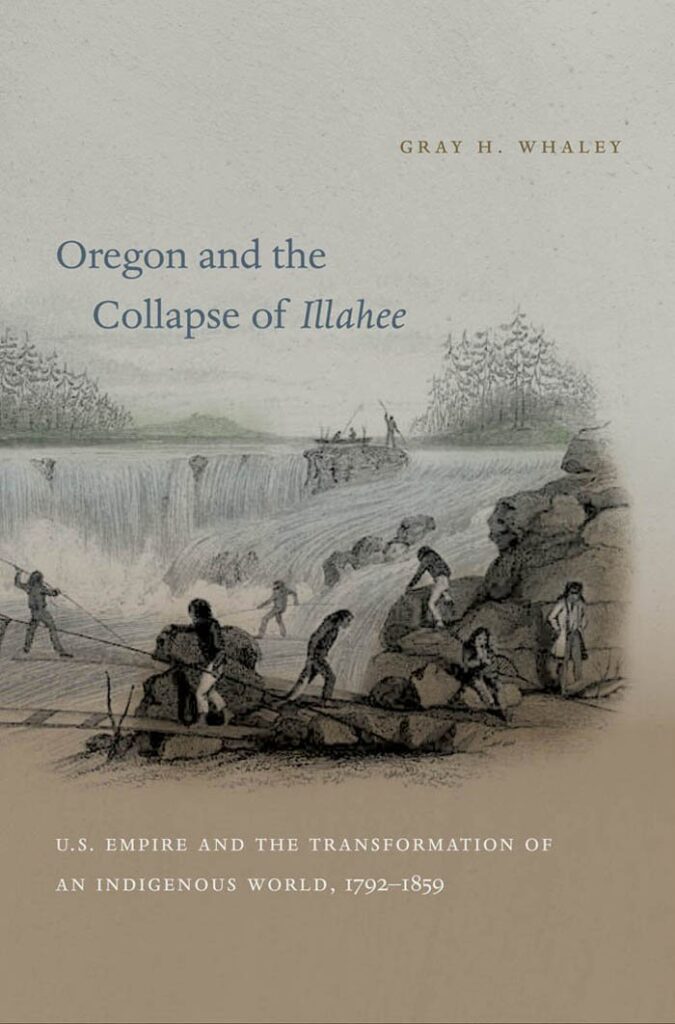
Oregon and the Collapse of Illahee: US Empire and the Transformation of an Indigenous World 1792-1859, 2010. Gray Whaley.
The author examines the British and American newcomers’ interactions with Native peoples–focusing on political sovereignty, religion, trade, sexuality, and the land–from initial encounters to Oregon’s statehood. He emphasizes Native perspectives, using the Chinook word Illahee (homeland) to refer to the indigenous world he examines.

The Sandal and the Cave: The Indians of Oregon, 2005. Luther Cressman.
A brief introduction to the prehistory of Oregon Indians written by the man whose 1938 discovery of a 9,000-year-old sandal in Fort Rock Cave in Oregon revolutionized accepted theories of western prehistory. Cressman is often referred to as the ‘father of Oregon archeology.’

Standing Tall: The Lifeway of Kathryn Jones Harrison, 2005. Kathryn Olson.
Puts a personal face to the story of tribal termination, through restoration with her far sighted leadership. Foreword by Mark Hatfield describes her generosity of spirit which seeks to contribute to the surrounding communities that threaten to engulf the tribal land.

Tribal Histories of the Willamette Valley, 2023. David Lewis.
The written and oral history of Oregon through the stories of the Indigenous Peoples of the Willamette Valley, written by a Confederated Tribes of the Grand Ronde tribal member, and OSU professor of anthropology.
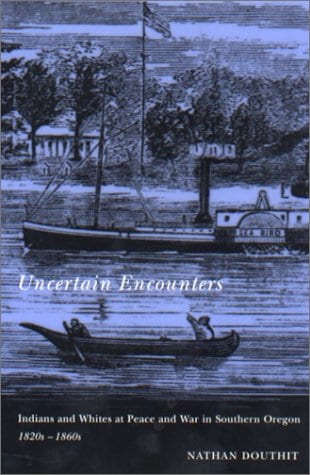
Uncertain Encounters: Indians and Whites at Peace and War in Southern Oregon, 1820s-1860s, 2002. Nathan Douthit.
Explores trade relations with southern Oregon Indians, emphasizing its responsibility for Indian hostility; includes the Rogue War both Indian and white miners’ accounts. As a major aspect of the story, Douthit highlights the development of a little-known middle-ground of relationships between Indian women and white men during and after removal.
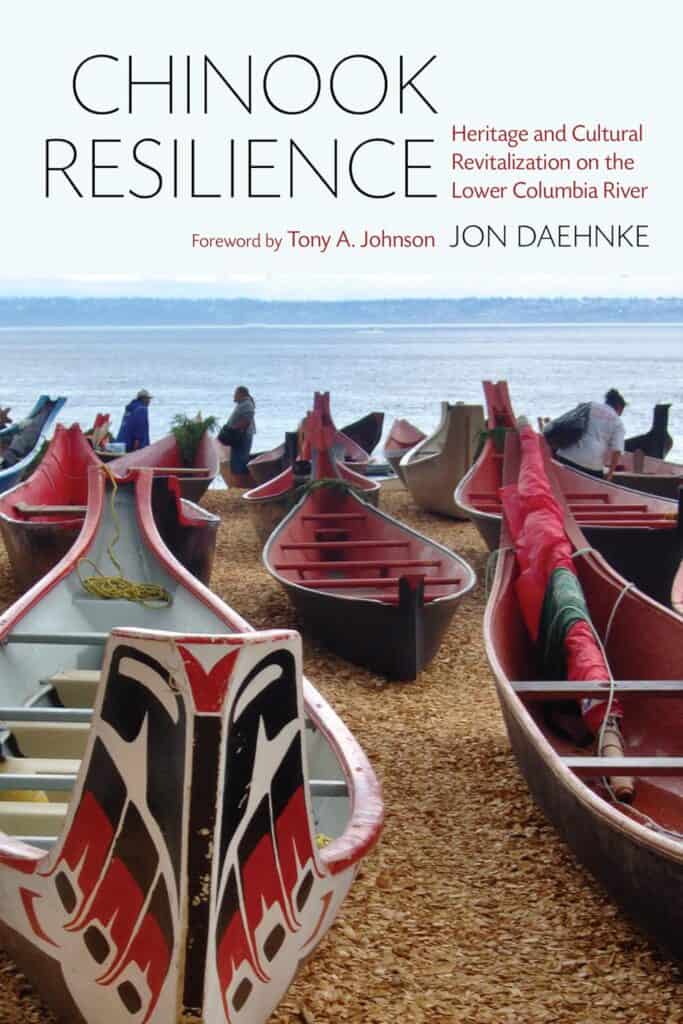
Chinook Resilience: Heritage and Cultural Revitalization on the Lower Columbia River, 2017. John Daehnke.
Although the federal government yet does not recognize the Chinook Nation, this book documents the tribe’s long connection to place, traditions, language and culture of their ancestors.
Population Decline/Introduced Diseases
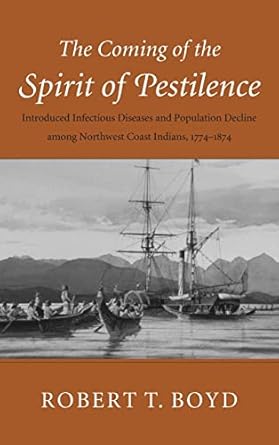
The Coming of the Spirit of Pestilence: Introduced Infectious Diseases and Population Decline among the Northwest Coast Indians 1774-1874, 1999. Robert Boyd.
Native American Literature – Local and Oregon
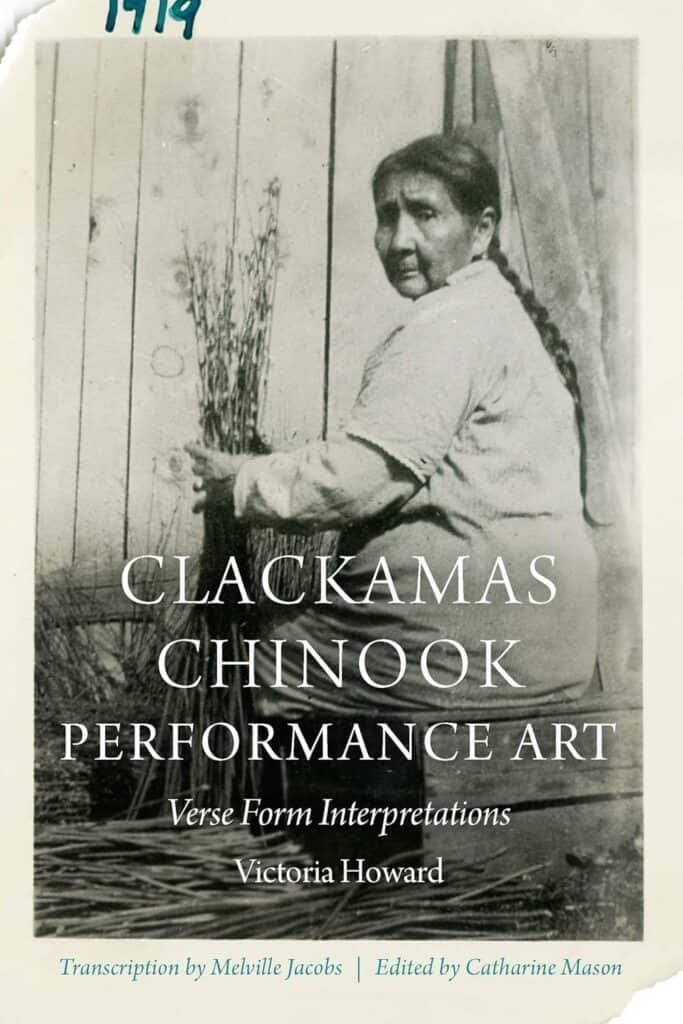
Clackamas Chinook Performance Art: Verse Form and Interpretations, 2022. Victoria Howard and Catharine Mason.
Victoria Howard, Clackamas Chinook and Molalla, was born 1856 on the newly established reservation at Grand Ronde. Catharine Mason has edited twenty-five of Victoria Howard’s spoken-word performances into verse form entextualizations, along with the annotations and transcription provided by Melville Jacobs in his publications of Howard’s corpus in the late 1950s. Wax recordings of Howard’s verse are from 1919.
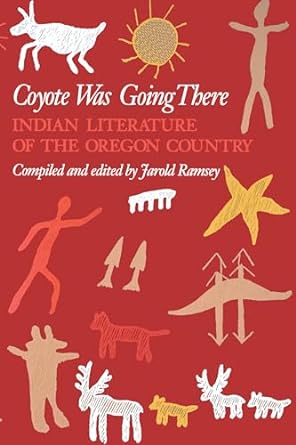
Coyote Was Going There: Indian Literature of the Oregon Country, 1977. Compiled and edited by Jarold Ramsey.
Contains traditional stories of the Oregon and southern Washington Indigenous Peoples. Many gathered from early anthropologists recordings stored in academic repositories-are now made public.
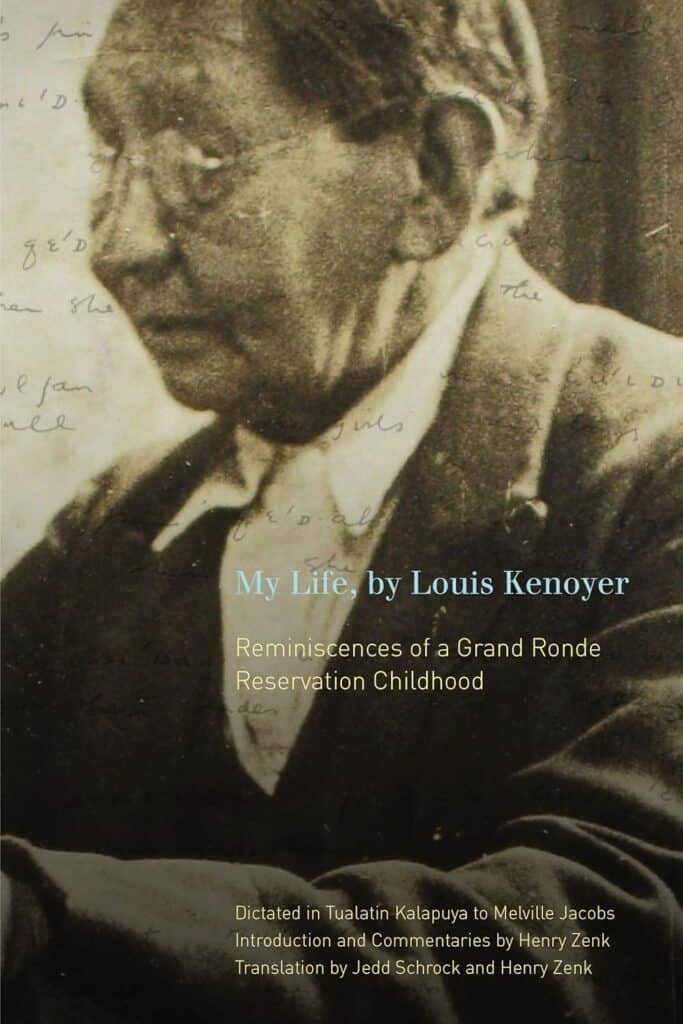
My Life, by Louis Kenoyer: Reminiscences of a Grand Ronde Childhood, 2017. Kenoyer and Schrock, et al.
Kenoyer dictated this autobiography in the Tualatin language in 1928 and 1936. He describes his life on the Grand Ronde Reservation in Oregon, focusing on his childhood in the late 19th century, daily life there, and the forced acculturation and transformation of their traditional fishing, hunting, and gathering cultures into agrarians speaking English and practicing Catholicism, including his time at Catholic school. The volume includes both the Tualatin text and an English translation, along with notes and commentary providing historical and ethnographic context.
General – Indigenous Art and Culture
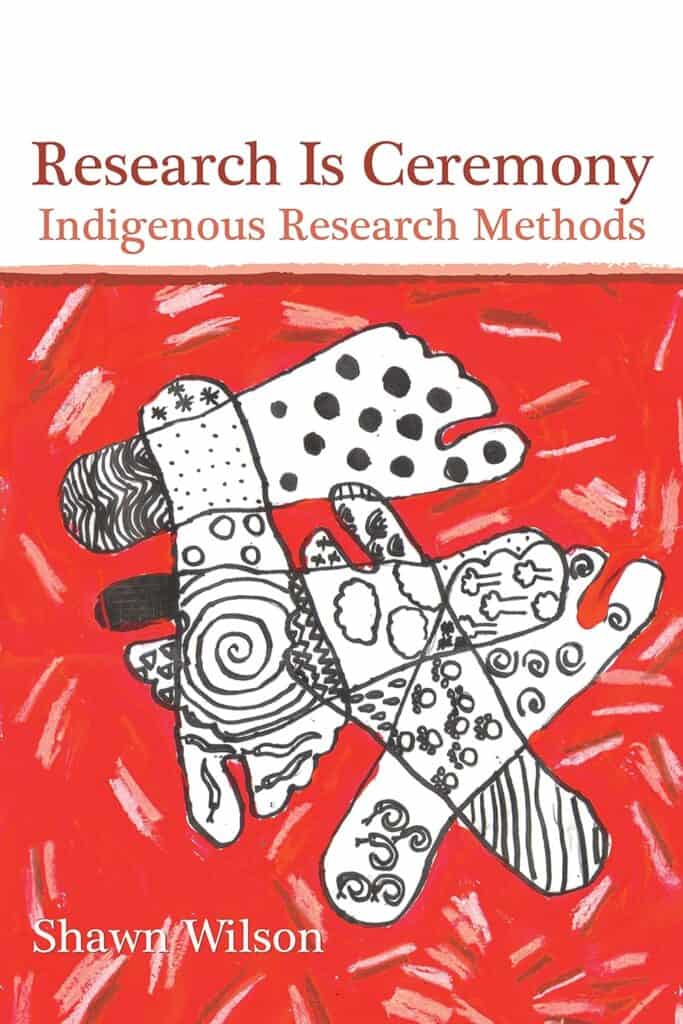
Research is Ceremony: Indigenous Research Methods, 2008. Shawn Wilson.
The author writes about the straddling of Indigenous (oral history) and academic (written records) worlds. This gives the westerner a unique way of viewing Indigenous history and research methods.
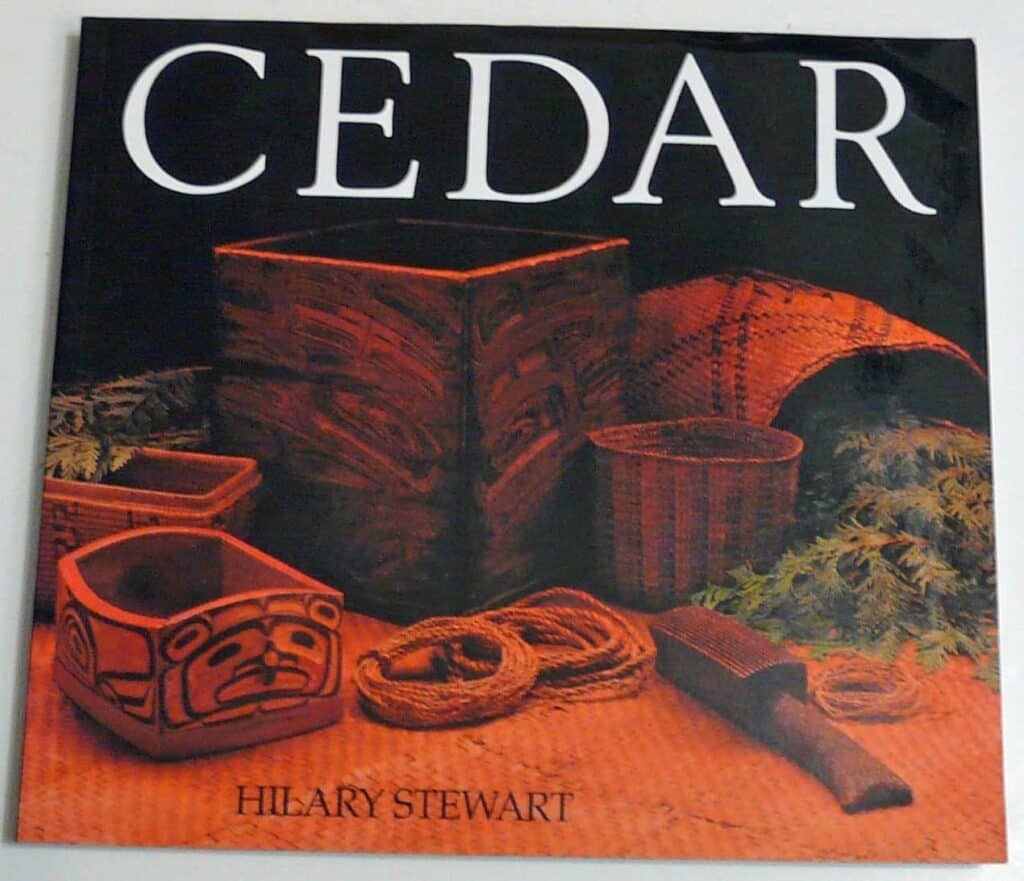
Cedar: Tree of Life to the Northwest Coast Indians, 1995. Hilary Stewart.
From the giant cedar of the rainforest came a wealth of raw materials vital to the way of life, art and culture of the early First Nations people of the Northwest Coast.
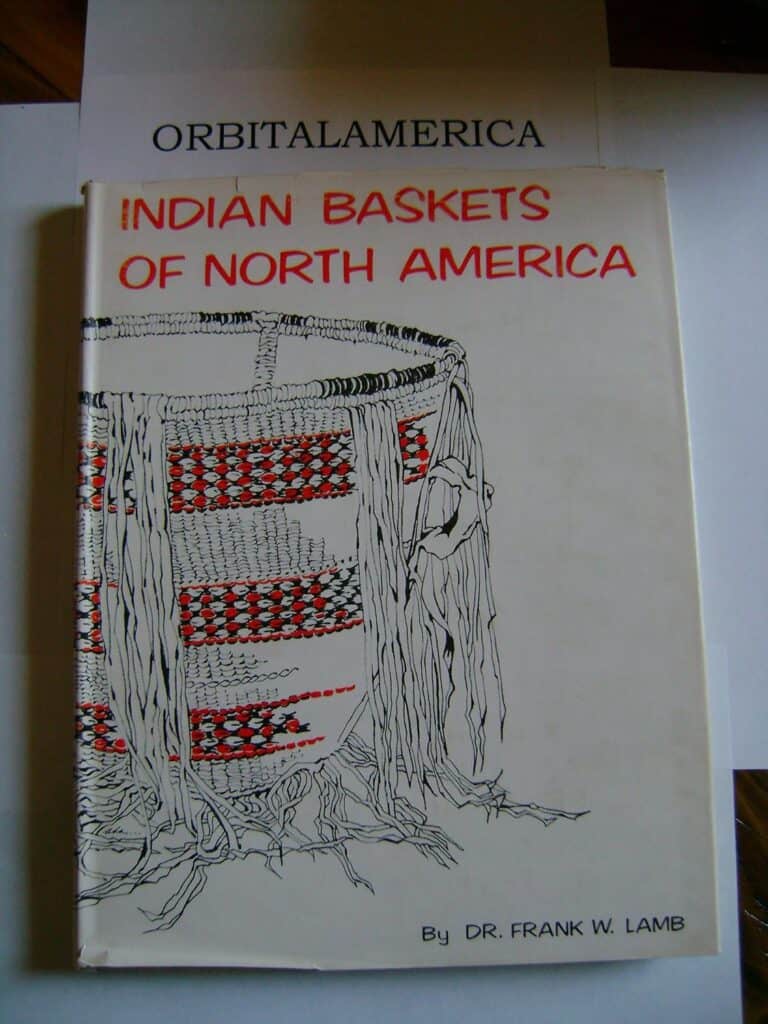
Indian Baskets of North America, 1981. Frank Lamb.
The art and extent of basketry found in North America. Described by a local collector with hopes of finding and preserving this art form. Photos of weaving styles and materials.
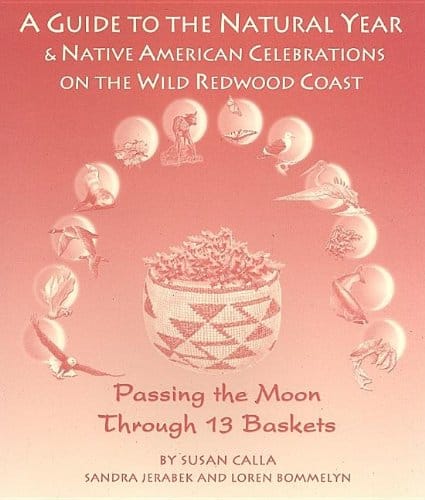
Passing the Moon Through 13 Baskets: A Guide to the Natural Year and Native American Celebrations on the Wild Redwood Coast, 2005. Susan Calla, Sandra Jerabek, Loren Bommelyn.
Inspired by N California Yurok and Tolowa Indians, following the tradition of seasonal offerings (via baskets).
DVD Catalog
Aboriginal Architecture
Can buildings talk and tell stories? How traditional architecture influences contemporary indigenous architects. Haida, Pueblo, Mohawk, Iroquois, Inuit, Crow, Navajo, Coast Salish. There is a renaissance of indigenous-inspired design of public buildings on reservations. (2005, 93 min)
Apache 8: Facing Fire
Story of an all-women wildland firefighter crew from the White Mountain Apache Tribe. Many personal stories of triumph, loss. More than 100 Apache women have worked as wildland firefighters. (2011, 57 min)
Badger Creek
Four seasons in the life of a Blackfeet family in Montana. They practice a traditional Blackfeet lifestyle that includes language immersion school, traditional Blackfeet (Pikuni) worldview, that stopped the cycle of drinking and violence. Four seasons on the magnificent and traditional territory of the Pikuni Nation. (2017, 27 min)
Blackfeet Encounter
Beautiful footage of landscape. The Lewis and Clark ‘s only deadly encounter- with the Blackfeet Nation. Explore rich Blackfeet history and culture that is alive today. (2007, 57 min)
Blood Memory
An adoption survivor of the Indian Adoption Era reclaims the missing pieces of her stolen past. Communal healing of a stolen generation of the Rosebud Sioux Tribe. (2020, 56 min)
Columbus Day Legacy
(Show Columbus Day week)
Film explores the American issues of free speech and ethnic pride. Navaho filmmaker takes viewers into a very personal and public conflict in Denver, CO. 1977 was the first Indigenous People’s day celebration, and in 1988 there was a campaign to stop the Columbus Day parade. But in 1992, the Italian-American community revives the Columbus Day parade tradition, to the dismay of the local American Indian Movement (AIM) chapter. (2011, 50 min)
Crying Earth Rise Up
(Show same month as film about different reservations and mining)
A Lakota mother seeks source of water contamination causing her daughter’s health problems, while a grandmother fights the regional expansion of uranium mining. Explores cost of uranium mining and Great Plains drinking water. (2015, 57 min)
Finding Refuge
Isabella, a stage-four cancer patient, travels to Refuge Rock, locale of her tribes last stand in the Aleutian Islands. She seeks to understand how history has shaped the lives of her Alutiq people, and how shame is an innate feeling for Alaskan Natives. Wonderful story. (25 min)
Grab
(Show at Thanksgiving)
Intimate portrait of Grab Day in the villages of the Laguna Pueblo. Objective: to share your wealth. A Thanksgiving for support and good will to the community. (2011, 56 min)
Growing Native Oklahoma: Red People
Oklahoma is home to 39 traditionally recognized tribes. A few of these tribes are highlighted here: Kiowa warrior nation and artistic style. Osage nation working to keep language. Choctaw nation seed preservation. Buffalo. Loretta Oden Barrett, Potawatomi Chief. Chris Eyre, host. (2018, 57 min)
Growing Native Northwest: Coast Salish
“Our ancestors spirits don’t die if we continue to do what they taught us.” Canoe Journey, Cedar, Celilo FallsLillian Pitt, Camas. Film gives us a sense of place and shared rhythm of the Tulalip, Grand Ronde, and Warm Springs tribes. Chris Eyre host. (2018, 57 min)
Harold of Orange
Well-known indigenous comedian pokes fun at white colonizers. Tricksters. (1984, 27 min)
Horse Tribe
Nez Perce horses, revered as source of spiritual strength, were taken in 1877. In the 21st c. the tribe decides to bring horses back into tribal culture. An epic story of vision and grit, a community in conflict, a man in crisis, and a beloved herd at risk. Excellent documentary. (2014, 57 min)
Indians Like Us
A group of French residents in love with Native American culture are invited to visit Pine Ridge, Little Big Horn, and Wind River. They discover the reality of contemporary Native Americans is quite different from their weekend reenactments in France. Humorous and enlightening encounters. (2010, 57 min)
Indian Country Diaries: Seat at the Drum
How Native people in urban America resist assimilation in Los Angeles. History of Urban Indian Relocation Program of the 1950s. Explores challenges facing Native Americans today. Includes powwow scenes. (2005, 86 min.)
Injunuity
(Show in segments: pride month, 4th of July, LGBTQ Pride)
Animated film about language, cultural connection to past. It’s time to listen to Indian voices. Giving vs. getting. Aculturation vs. assimilation. Iroquois influence on U.S. Constitution and values. Two Spirit: revered, but destroyed by white religion. (30 min.)
Keep Talking
Enjoyable film
“Language is life.” Four Alaska Native women work at preserving Kodiak Alutiiq language and culture. A troubled teen is inspired to learn language and dance of her ancestors. Bigfoot native story included. Inspirational work with young and dance. (79 min, 55 min version, 18 bonus)
March Point
(Show with Crying Earth Rise Up)
Three Swinomish teenage boys become aware of destruction of their communities by oil refineries in Anacortes, Washington. This is the topic of their investigative video assignment which leads them to experience the need to understand and tell their stories, and the power of the process to change their lives. They even go to D.C. (2006, 56 min)
Medicine Game: Two Brothers, One Dream
(Show at football season?)
Importance of Lacrosse, and a father who nurtures the talent of his four sons. The film follows the two eldest brothers – these players are active today. (2013, 70 min)
Medicine Woman
(Show during Women’s History Month?)
The story of the first Native woman doctor, and modern day medicine women from the Omaha, Lakota and Navajo tribes. How can they mend the wounds of body and spirit that history has created? (2016, 60 min)
Navaho Math Circles
(Show in September: back to school)
Math educators tie math principles to Navajo environment and culture, emphasizing student-centered learning. Math circles raise the hopes of parents and students for a brighter future. Emphasizes visual/kinesthetic learners, spirit of math. (2016, 58 min)
Ohiyesa: The Soul of an Indian
Excellent. We own his collection of books about traditional culture and stories. Well-known to boy scout leaders!
Charles Eastman (Ohiyesa) was born in 1858. He became an activist, author, and first Native doctor, grew up with traditional ways in Canada until his father brought him back to the U.S. to boarding school. He became a doctor, was at Wounded Knee. Wrote of Native character and spirit. Part of first Native rights movement. Can indigenous people retain their cultural traditions and worldviews while working within institutions and a society that was created to oppress them? (2018, 57 min)
People’s Protectors, The
(Show Memorial Day, Veteran’s Day)
Four Native American veterans’ experiences during the Viet Nam war, and how their communities helped them carry their warrior legacy proudly. There are many ways to be a Protector, an important role in tribal society.
Red Power Energy
Can energy development empower a people while powering the United States? How do different tribes use their reservations to maintain economic sovereignty? Divisive views on caring for earth vs. income for the tribe. Southern Ute, Mandan-Hidatxa-? Nation, Northern Cheyenne, Crow and more. Uranium mining, coal, oil and gas, wind and solar energy. (2016, 57 min)
Rising Voices Hothaninpi: Revitalizing the Lakota Language
Imminent peril to Lakota language. “The spirits don’t hear English.” Explores the historical attempt by U.S. to annihilate the language, the rise of immersion language schools, and participation of outsiders. History is interwoven with present-day short films about Lakota culture. (2015, 57 min)
Sacred Stick
(Show at football season?)
Oneida nation. History of what we call Lacrosse, which was a originally a sacred game tied to the creation story, that Natives adapted within the dominant culture. Now the fastest growing sport in America. Contains clips from real games. (2012, 57 min)
Seasoned with Spirit: Bounty of River’s Edge
Culinary dishes. Northern California Klamath Yurok culture. Salmon, seaweed, medicines, acorn, basketry, cedar, dwellings. (2006, 26 min)
Seasoned with Spirit: Cuisine of the Desert Southwest
Culinary dishes. Arizona Sonora Desert- Tohono O’odham. Food sources, saguaro cactus, wild spinach, mesquite juice, yucca baskets. (2006, 25 min.)
Seasoned with Spirit: Food upon the Water
Show with Tedx video of Winona LaDuke—see Resources list
Culinary dishes. Ojibwe people of the Great Lakes. Winona La Duke, wild rice, swamp tea, stuffed acorn squash, birch trees, basketry. (2006, 26 min)
Seasoned with Spirit: Gulf Coast Originals
(Show around Mardi Gras)
Before the arrival of the Acadian French, Native Americans lived in Louisiana’s bayous. Houma Nation. Culinary dishes. Creation story about crawfish. History of area. Basketweaving, fishing, cypress tree loss. (2006, 26 min)
Seasoned with Spirit: Return of the Buffalo
Culinary dishes. Cheyenne River Sioux reservation in South Dakota. History of buffalo loss and restoration. Culinary use of buffalo today. (2006, 30 min)
Smokin’ Fish
Shown on PBS- a humorous and very interesting documentary about a quirky Tlingit businessman of Juneau, Alaska, who spends the summer smoking salmon at his family’s traditional fish camp. Interweaves history of his people and process of preparing traditional food.Story of a man who has reclaimed his Tlingit heritage? (2011, 56 min)
Spirit in Glass: Plateau Native Beadwork
Columbia Plateau Native beadwork, Warm Springs, WA. Glass beading is a traditional and a contemporary art. “It heals you when you give a piece you have made away.” Pendleton Rodeo is featured. (2014, 30 min)
Standing Bear’s Footsteps
“All I ask is what is mine…my land, my freedom, my dignity as a man.” In 1877, the Ponca people were moved 600 miles south from Nebraska to Oklahoma. Chief Standing Bear took their case to court where it was decided that Indians have a right to habeas corpus—personhood under the law. The Chief later cut ties with his tribe in order to be as free as the white man, and not be a ward of the government. What does it mean to be a person? Perhaps to suffer and survive. (57 min)
Standing Silent Nation
On PBS POV. Moving documentary. Lakota family’s struggle to retain tribal identity and sovereignty against history and federal policy against growing industrial hemp. Oglala Lakota pass legislation to grow industrial hemp, but federal government won’t allow it. Alex White Plume is still in the news. (2007, 53 min)
Thick Dark Fog
(Show during mental health month? We have his book)
Award-winning documentary. Lakota, Pine Ridge Reservation. Focuses on one man: the effects of boarding school, American Indian Movement (AIM) Wounded Knee occupation. The story of how Walter Littlemoon confronted his past so that he could renew himself and his community. Healing through writing. (2012, 56 min)
To Brooklyn and Back: A Mohawk Journey
Mohawk ironworkers helped build many skyscrapers in New York City in 1920s and later. They established a vibrant community in Brooklyn, Little Caughnawaga. Community of families moved back and forth between New York City and Canada for work. (60 min)
Twelve Days of Native Christmas
Visual/musical adaptation of the classic Christmas song, representing 12 different native groups. (2009, 5 min)
Video Letters from Prison
Pine Ridge Lakota. Touching story of three sisters re-connecting with their father in prison. Amazing mother. (56 min)
Waterbusters
No subtitles, voices are a little muddy. Effect of dams and water projects on tribal lands and culture. Effect of broken treaties, destruction of family homes leads to generational trauma.
What Was Ours
Who owns the past? Tribal recovery of ancient artifacts. Wind River Reservation. Interesting points of view among tribal members. (slow-moving, long story. Good powwow piece)
